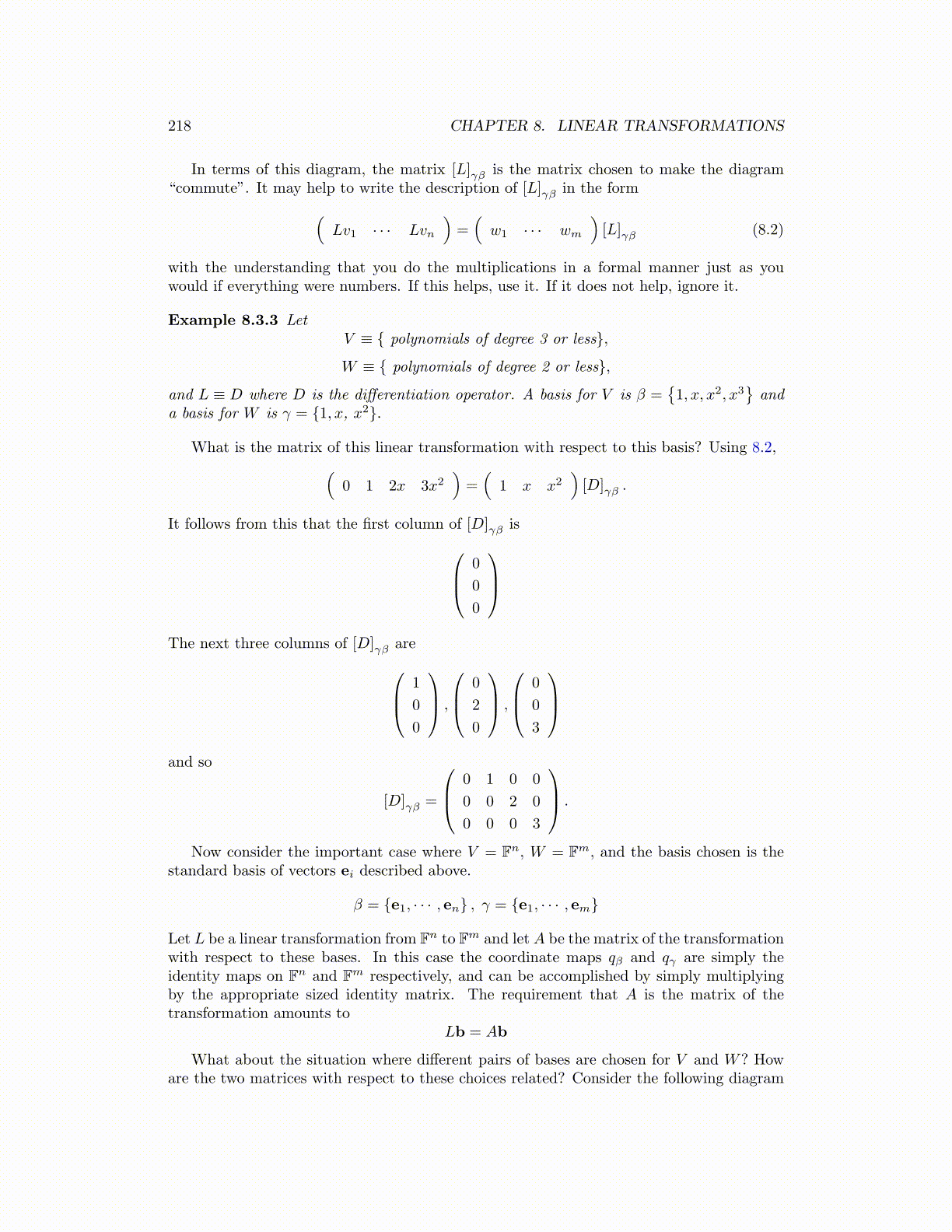
218 CHAPTER 8. LINEAR TRANSFORMATIONS
In terms of this diagram, the matrix [L]γβ is the matrix chosen to make the diagram“commute”. It may help to write the description of [L]γβ in the form(
Lv1 · · · Lvn
)=(w1 · · · wm
)[L]γβ (8.2)
with the understanding that you do the multiplications in a formal manner just as youwould if everything were numbers. If this helps, use it. If it does not help, ignore it.
Example 8.3.3 LetV ≡ { polynomials of degree 3 or less},
W ≡ { polynomials of degree 2 or less},
and L ≡ D where D is the differentiation operator. A basis for V is β ={1, x, x2, x3
}and
a basis for W is γ = {1, x, x2}.
What is the matrix of this linear transformation with respect to this basis? Using 8.2,(0 1 2x 3x2
)=(
1 x x2)[D]γβ .
It follows from this that the first column of [D]γβ is 0
0
0
The next three columns of [D]γβ are 1
0
0
,
0
2
0
,
0
0
3
and so
[D]γβ =
0 1 0 0
0 0 2 0
0 0 0 3
.
Now consider the important case where V = Fn, W = Fm, and the basis chosen is thestandard basis of vectors ei described above.
β = {e1, · · · , en} , γ = {e1, · · · , em}
Let L be a linear transformation from Fn to Fm and let A be the matrix of the transformationwith respect to these bases. In this case the coordinate maps qβ and qγ are simply theidentity maps on Fn and Fm respectively, and can be accomplished by simply multiplyingby the appropriate sized identity matrix. The requirement that A is the matrix of thetransformation amounts to
Lb = Ab
What about the situation where different pairs of bases are chosen for V and W? Howare the two matrices with respect to these choices related? Consider the following diagram